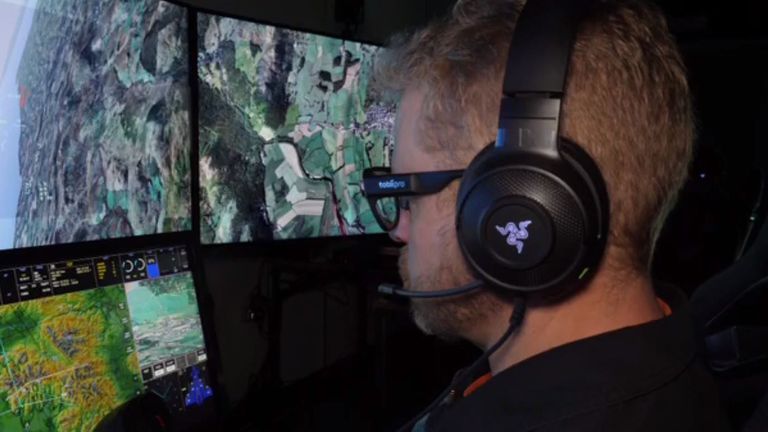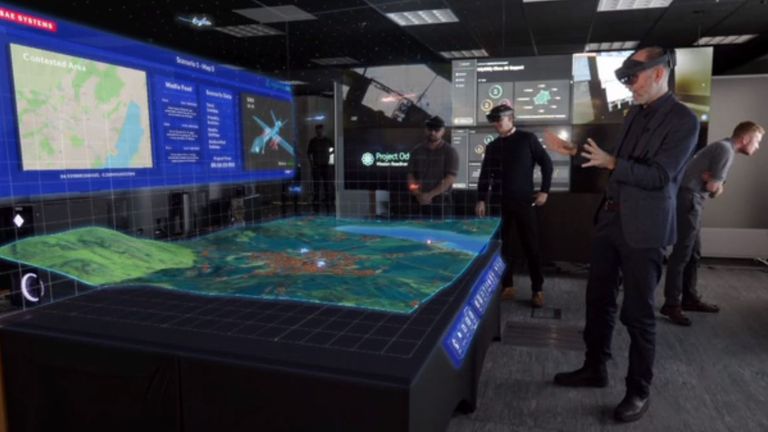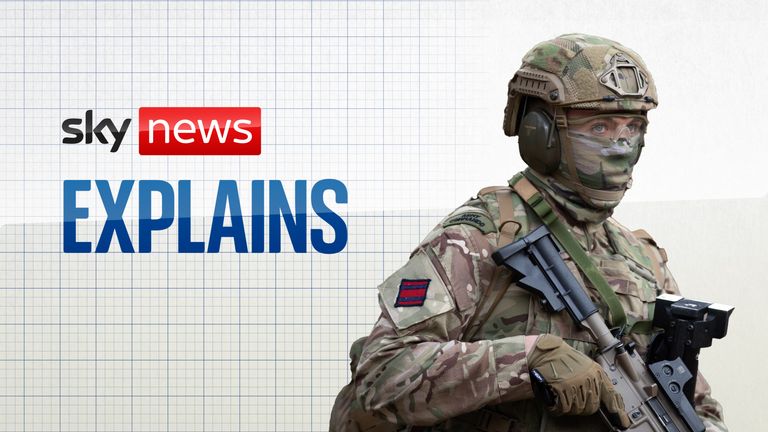I’m watching as war breaks out in the Lake District.
Tensions have been escalating for months between blue forces from the south and red forces in the north over disputed territory around Kendall. Now a helicopter has been shot down and both sides are attacking.
It’s an exercise, of course. Not on a military training ground, but in a non-descript building on an airfield in Lancashire.
But the room I’m standing in is filled with people representing different branches of the armed forces, the RAF in flight simulators, infantry personnel in VR headsets crouching behind a wall of simulated sandbags, with surveillance drone and satellite intelligence teams in front of large video screens.
The military has been using computers to practice battles for decades. Flight simulators with realistic terrain to train pilots are the best example.
But what’s happening here is different.
It’s one of the first examples of what’s known as a Single Synthetic Environment – a “digital twin” of real-world 3-D terrain and airspace – being used to train the military.
Armed forces around the world are exploring the power of these virtual worlds in which to rehearse wars.
‘We’re going to see a blurring of the physical and digital world’
“Historically the simulation and the simulator were together – we’ve separated those two,” said Lucy Walton, head of training at BAE Systems, which is developing the technology.
“It replicates the physics, it replicates the real world terrain and now we have one that everybody uses in the same central system.”
The concept may sound familiar – it’s the same technology used in massively multi-player online gaming environments (MMOGs) – and perhaps not surprisingly the people behind those games are involved here.
“We’re going to see a blurring of the physical and the digital world,” says Mimi Keshani, co-founder of Hadean, a London-based software firm that has worked with companies like Minecraft to build their virtual worlds.
“You’ve got a huge amount of complexities to manage, and different levels of fidelity from different people interacting. So in this system, we’ve got people in Typhoons and assets flying above the ground, we’ve got land forces. All of them need to see different things, but they need to see it in a common operating picture.”
The system has 60,000 AI ‘entities’
The system exploits massive improvements in the speed and power of cloud-based computing, as well as machine learning and AI software.
On top of the military forces involved in the exercise, the environment has “layers” like weather systems added on top. One crucial element typically missing from large-scale military training exercises are civilians.
This experimental system has 60,000 AI “entities” each representing a civilian in the virtual environment that responds to the actions taken by the military.
The potential advantage to the military is obvious.
In a time of limited defence budgets, training virtually and at scale can save millions in fuel, ammunition and personnel movements required for large scale military exercises. And the training isn’t limited to remote locations out of the way of towns and civilian airspace.
Nor is it vulnerable to the prying eyes of rival nations’ satellites.
Worries over pressures on budgets
“This allows us to train on a more frequent basis. So people don’t only get to go on large scale exercises once in an 11-year career, they could do this every week, if you wanted to,” says Ms Walton.
But there are concerns that as the technology continues to improve, blurring the lines even further between the real and the virtual world, that real-world military experience is lost.
Read more:
How much does the UK spend on defence?
VR creator says new headset can kill you if you lose in a game
The idea of bringing all branches of the armed forces together virtually to train is “very, very welcome,” according to Tobias Ellwood MP, chair of the Defence Select Committee.
“My worry is, because of pressures on budgets, that we will see the flight simulators, we will see these digital classrooms take over from getting out into the field and doing real-life experience in a battle group, regiment or brigade.”
An ever-expandable virtual environment may be ideal for training armed forces, but can it recreate the true conditions in which life-and-death decisions are made in combat?



